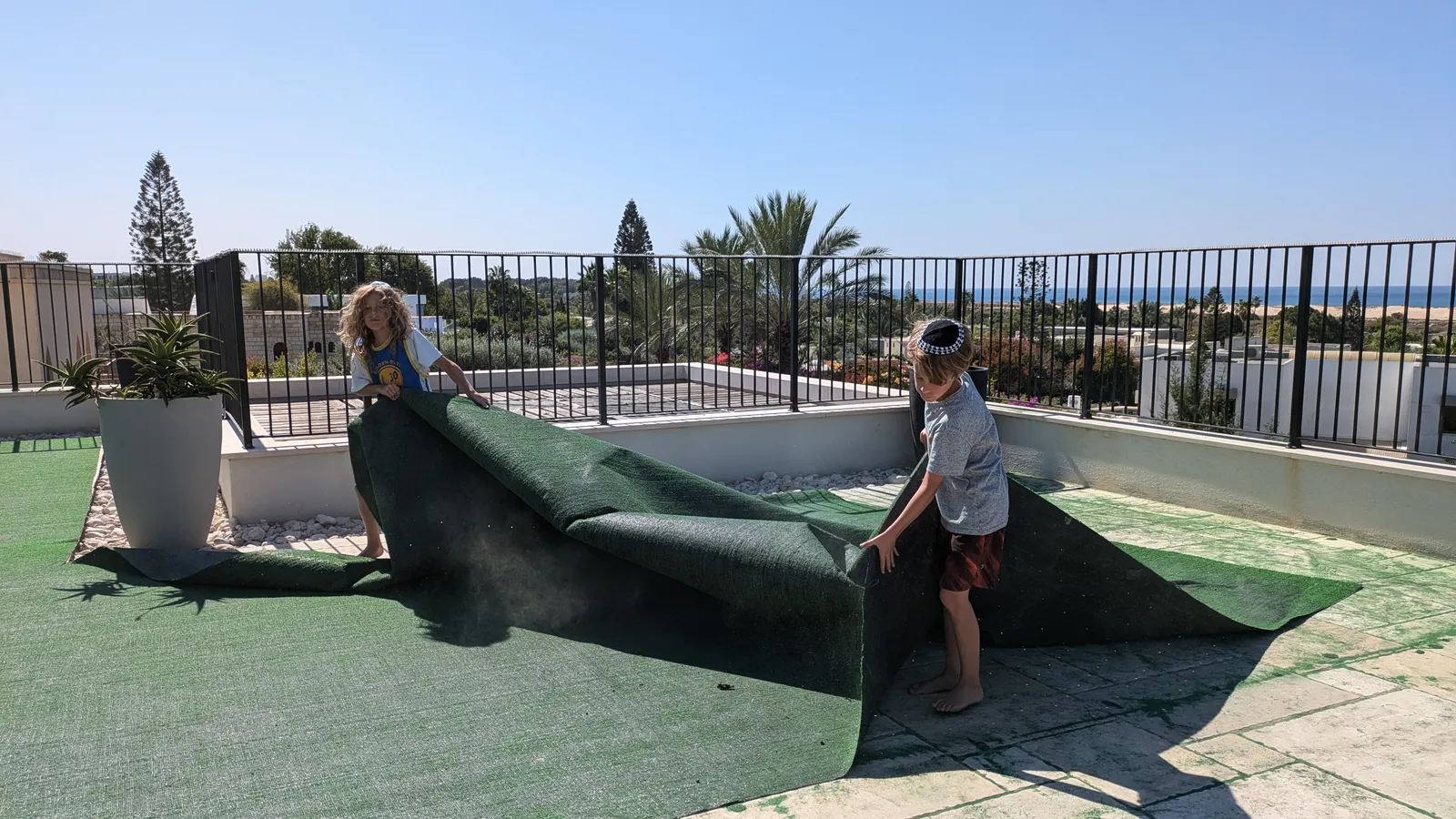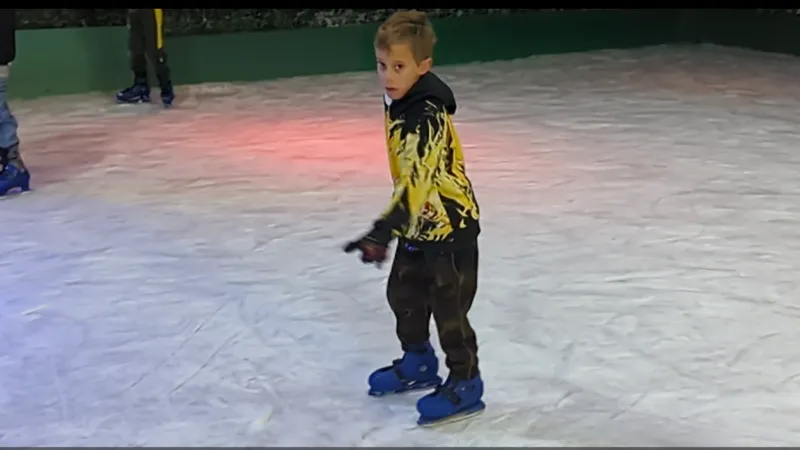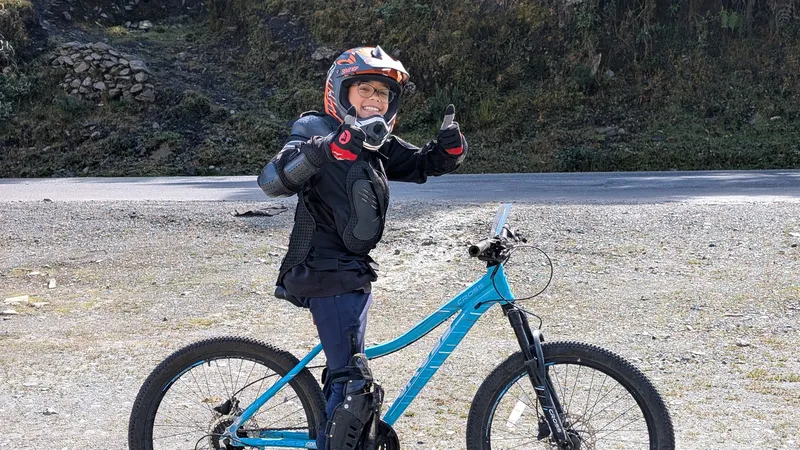The happenings of Wednesday October 23, 2024 through Thursday October 24, 2024 in Caesarea, Israel
Before we knew it the bliss of sukkot vacation was ending and Hoshana Rabbah and Simchat Torah were fast approaching. This year was like no other any of us had experienced. Last year Simchat Torah was October 7. The holiday is supposed to be one of, if not the most, joyous holidays of the Jewish calendar when we celebrate the receiving of the Torah on Mount Sinai. It is marked by singing with as much spirit as possible, dancing for hours around a Torah, sometimes through our neighborhood streets, and lots of candy for the children. It’s pretty much one big party that starts and ends with prayer services. There is also a tradition to gather our children under a tent made of tallitot/prayer shawls and sing words from the Torah often sung by parents to their children as a lullaby. This moment marks our pride in, gratitude for, and recognition of the future generations of Jews. The apprehension leading up to Simchat Torah this year could be felt in the air. How were we supposed to bring the same level of joy to the holiday when so many of our brethren were no longer with us, our family and friends were far away fighting in the war, and hostages were still being held captive? What about keeping things as normal as possible for our children?
The morning of Erev Hoshana Rabbah, I led the boys up to my parents’ roof deck for a musically engaging Hallel (a special prayer added on holidays) so they could perform hoshanot that ended with the traditional whacking of the willow leaves on the ground. The boys had a grand time walking in circles, singing at the top of their lungs, and whacking those leaves. Afterward, we realized we could help my parents by pulling up the fake grass they wanted to get rid of from their deck. The boys set to work and in just a few minutes had the entire “field” pulled up. Turns out fake grass leaves a lot of green dust. The boys all worked incredibly hard and fast. When they finished they moved onto picking more fruit from my parents’ trees for us to enjoy over the holiday.
That night we went to shul/synagogue. Everything felt different. There were almost no other children, which felt strange. The boys didn’t mind much because they got a huge bag of candy just for showing up. At the beginning of hakafot/the dancing segment of the night (that is divided into seven installments) the rabbi explained that the hakafot would progress from mournful to more joyous without ever truly reaching the height of joy we usually have. In this way we would continue our tradition while acknowledging that the mourning period continues. This choice was similar to many made by rabbis worldwide. No one in the congregation seemed to be interested in much singing and dancing, but the boys sang their hearts out whenever it seemed appropriate. At some point, my mother pointed out to me that one of the participants that evening included a Rabbi from Ramot who had lost two sons on October 7 and his daughter-in-law, who remarried to the man who saved her that day. All I could do was marvel at his attempt to participate in this moment knowing that I could never imagine how painful it must have been for him to do so.
On the walk home from shul the boys wondered why there wasn’t as much dancing and singing as they are used to. Chaim and I explained the challenge we face as a Jewish community between remembering and moving forward, and the choices made to try and strike a balance.
Shul the next day was similar. Davening/prayer service was lovely and hakafot were subdued. The boys struck gold with giant bags of candy, toys, and chips. We learned that there would be an “eighth” hakafah at the main synagogue in Caesarea after the holiday ended. The goal was to bring as many Jews together, regardless of religious affiliation and political beliefs to show that we are one nation, one people. A giant dance party in memory of Nova victims became an act of resistance and defiance. Unfortunately, Israelis are well-accustomed to transitioning from mourning to celebrating within only a few hours. Every year, Israel Remembrance Day leads right into Israel Independence Day. A day where most of the country is mourning a loved one who died serving their country quickly morphs into a national festival.
When we arrived at the shul, music was blaring. At the entrance was a table with yahrzeit/memorial candles set up in the shape of a Jewish star and a memorial sign for those who died and the hostages. Below, hundreds of people were gathered already dancing and singing around the Torahs. There were snack stalls and giant Israeli flags being carried around. Chaim, my father, and the boys went to the men’s side while I went to the women’s side. After dancing for a bit on my side, I stopped to watch the boys dance on the other side. They danced like their lives depended on it. Tears streamed down my face when I realized Amichai and Eitan were carrying two of the giant Israeli flags with such pride. As if that wasn’t moving enough, they each had a chance to carry a small Torah. They carried it like it was their baby to protect. The tears came again.
I was in awe of all these people who were dancing with every fiber of their being, knowing that the likelihood that they lost someone, or knew someone who lost someone on October 7, or since then, was very high. The resilience of my people is mindboggling and incredible to witness time and time again.



